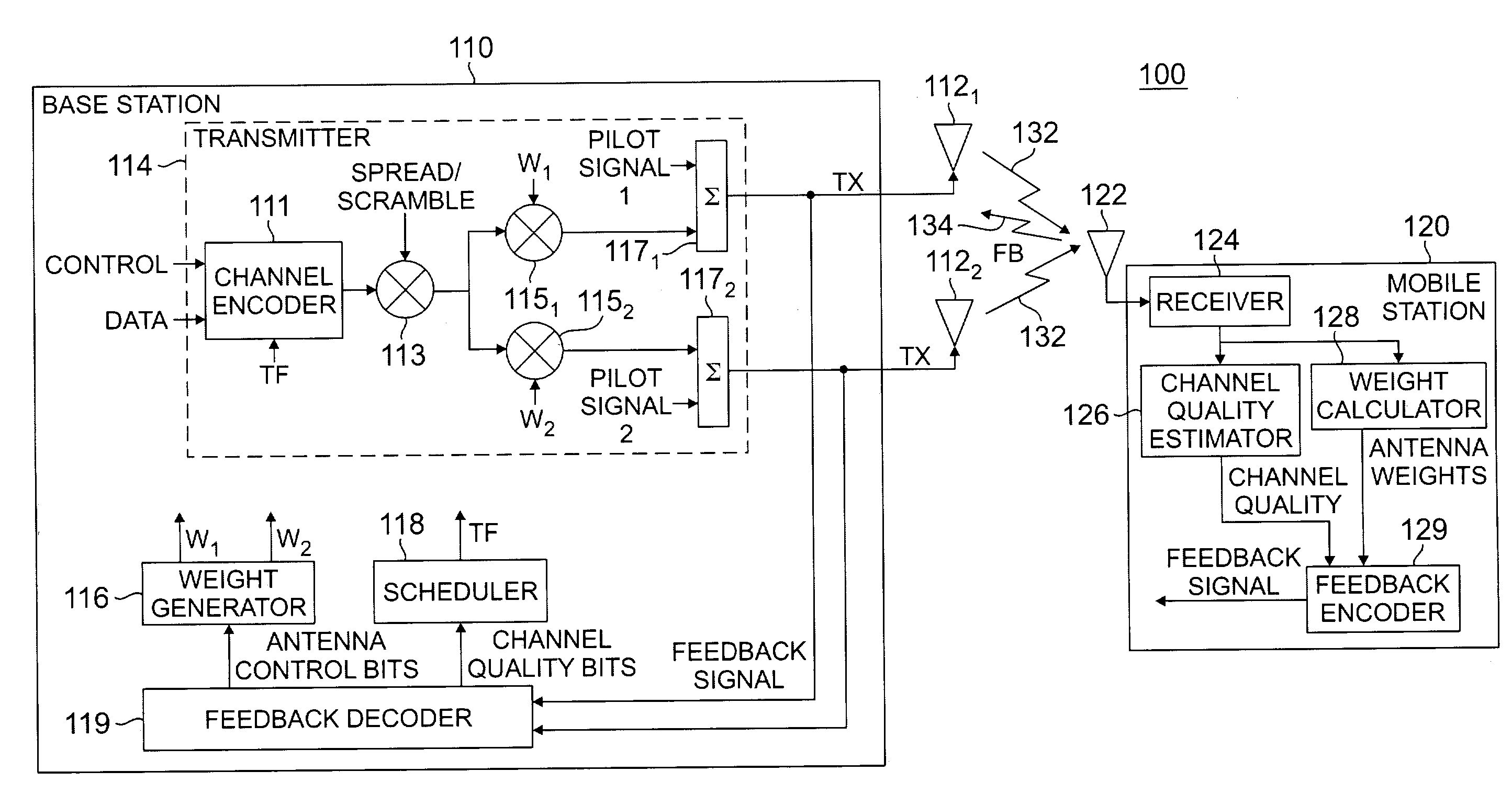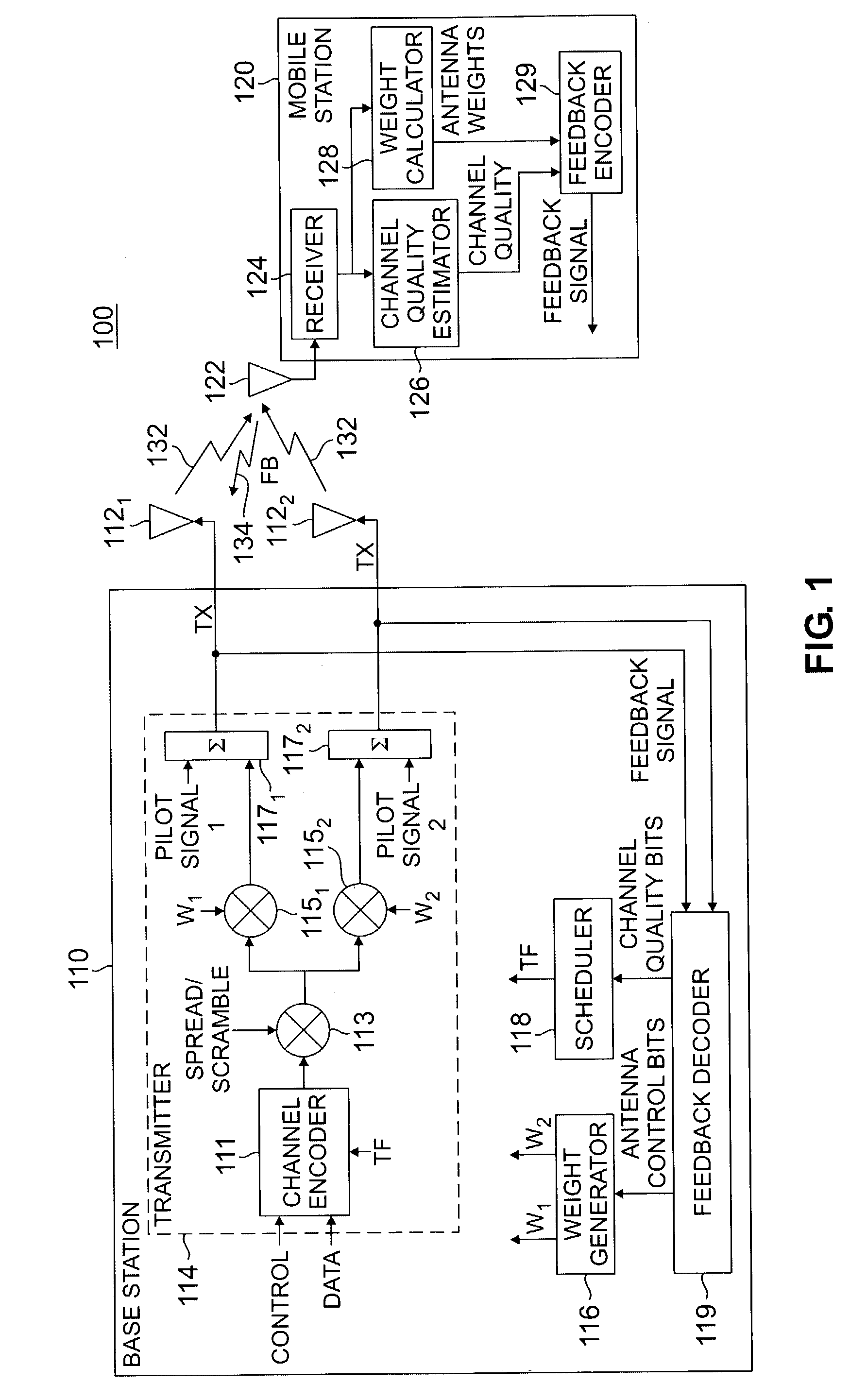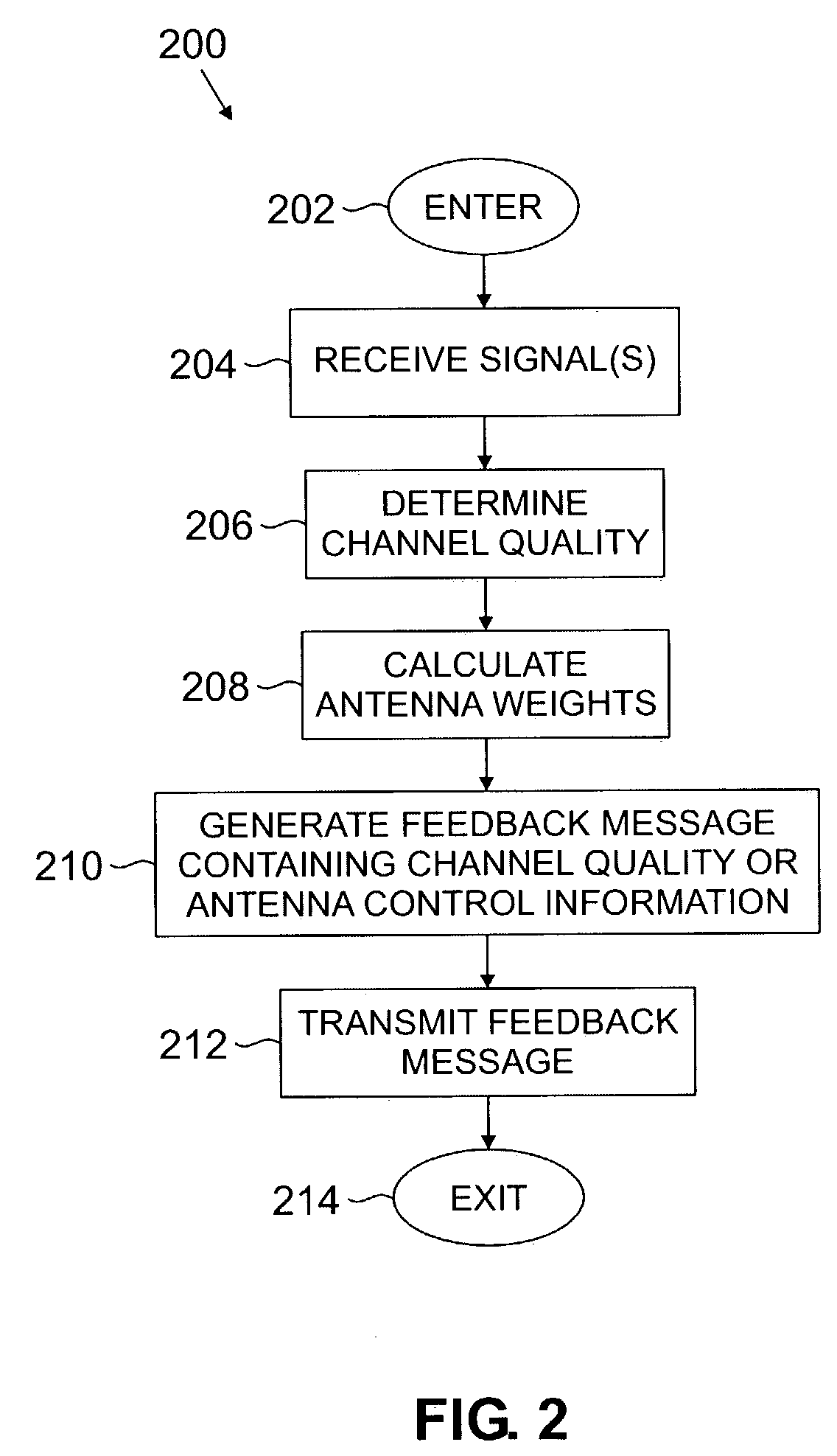Method and apparatus for feedback error detection in a wireless communications systems
a wireless communication system and feedback error technology, applied in the field of wireless communication systems, can solve the problems of reducing bandwidth, affecting the performance of the system, and affecting the reliability of the system,
- Summary
- Abstract
- Description
- Claims
- Application Information
AI Technical Summary
Problems solved by technology
Method used
Image
Examples
Embodiment Construction
[0020]The present invention provides methods, apparatus, and systems for performing transmit diversity in a wireless communications system. According to some aspects of the present invention, encoded antenna control information may be transmitted (fed back) from a mobile station to a base station. The base station may decode the antenna control information and use the decoded antenna control information to generate a set of antenna weights calculated to optimize transmitted signal strength received by the mobile station. According to some aspects, the encoded antenna control information may be interleaved in a single feedback control channel with channel quality information. According to other aspects of the present invention, feedback errors may be detected and / or corrected at the mobile station.
[0021]As used herein, the term closed loop transmit diversity (CLTD) generally refers to any transmit diversity scheme where feedback from a mobile station is used to control (e.g., adjust ...
PUM
 Login to View More
Login to View More Abstract
Description
Claims
Application Information
 Login to View More
Login to View More - R&D
- Intellectual Property
- Life Sciences
- Materials
- Tech Scout
- Unparalleled Data Quality
- Higher Quality Content
- 60% Fewer Hallucinations
Browse by: Latest US Patents, China's latest patents, Technical Efficacy Thesaurus, Application Domain, Technology Topic, Popular Technical Reports.
© 2025 PatSnap. All rights reserved.Legal|Privacy policy|Modern Slavery Act Transparency Statement|Sitemap|About US| Contact US: help@patsnap.com



